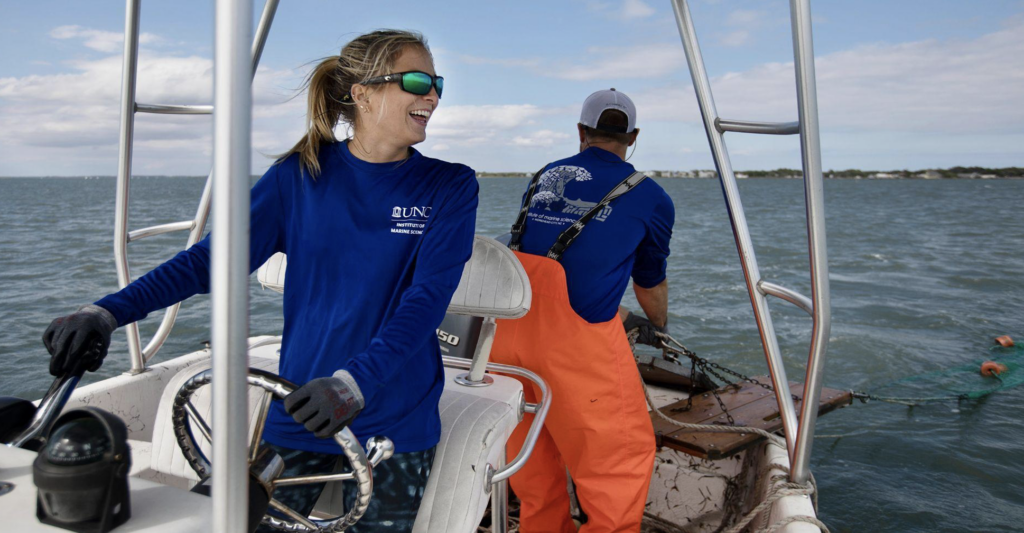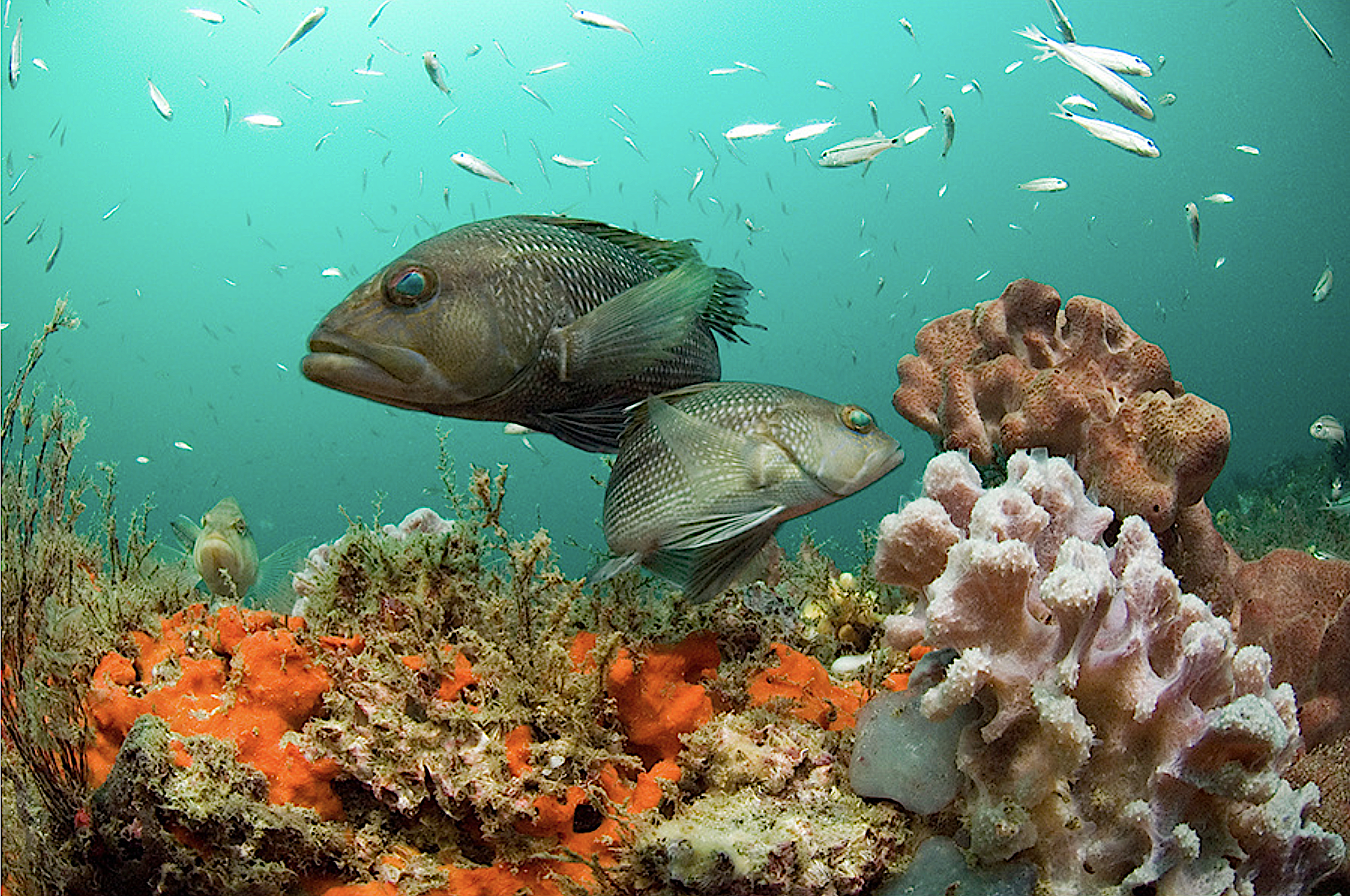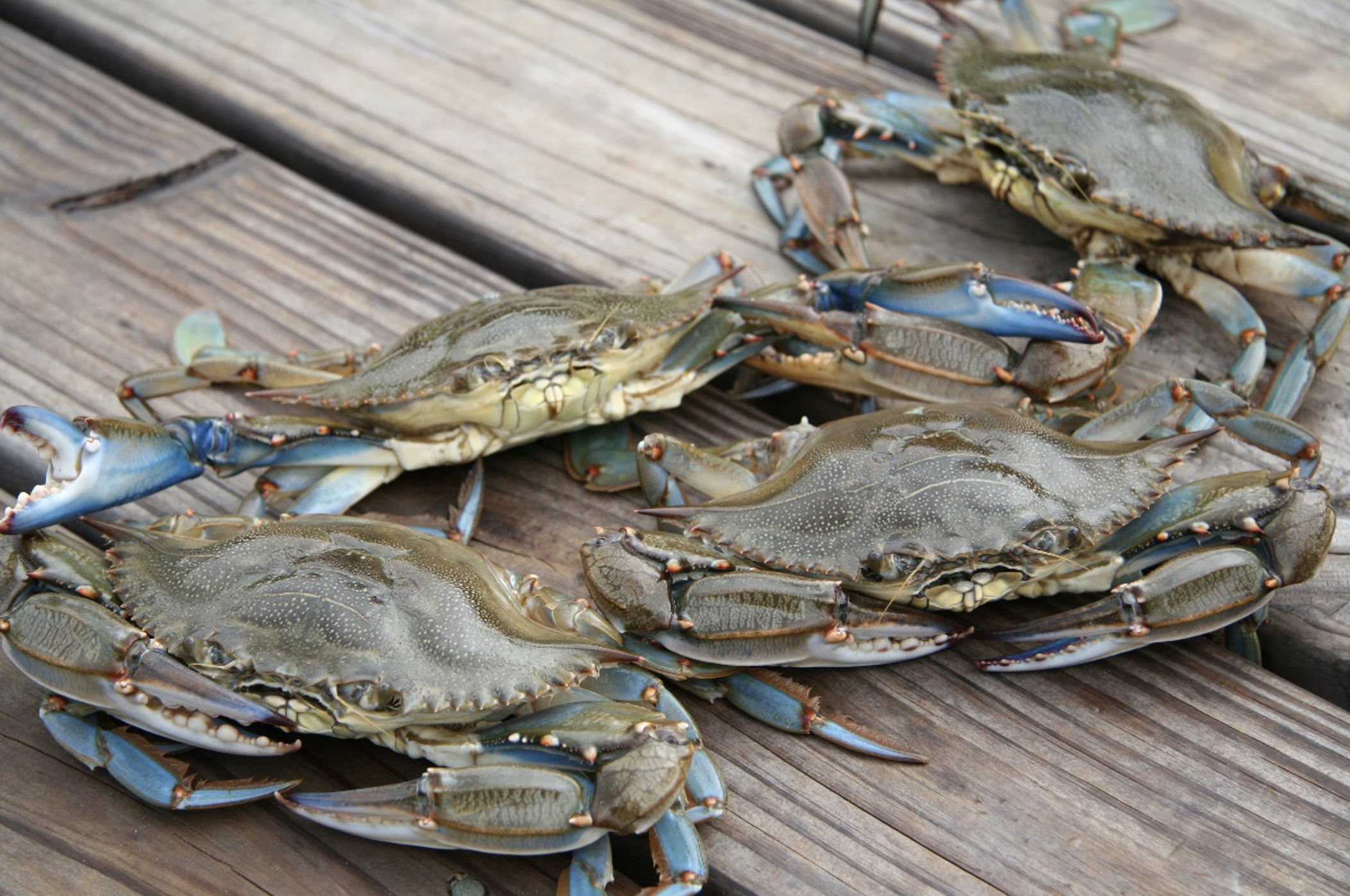New research suggests how different species will respond to warming oceans.
Research Need
Like humans, fish can’t cross certain cold and hot temperature thresholds and survive. As our oceans warm from a changing climate, fishes may adjust where they regularly live. This presents a challenge to fisheries managers and anglers.
How do we know where a fish will go? A first step is precisely knowing the lower and upper temperatures different fish species can tolerate.
Species that live farther from the equator experience larger temperature changes. Because of this, they also might be able to handle a wider range of temperatures. There is growing evidence that lower and upper temperature tolerances, rather than average temperature preference, explain where fish live.
What did we study?
We tested the temperature limits of 15 economically and ecologically important juvenile fish collected from seven estuarine locations and one offshore site in North Carolina. We grouped fish as either cool-water or warm-water species.
We kept fish in laboratory tanks and initially acclimated them to either 59°F, 68°F, or 77°F, depending on the range of temperatures a species from this region frequently experiences. We cooled or warmed water in the tank until we began to see signs of stress, such as loss of equilibrium and slowed swimming. We completed a total of 1,151 laboratory experiments.
In addition to these experiments, we used publicly available data to estimate how far north or south of the equator each species historically has lived. We compared temperatures in these areas to our estimates of thermal limits from our laboratory experiments to predict whether a species might change its home range.
What did we find?
Scientists believe that fish species that can live closer to the north and south poles can withstand greater swings in temperature and lower temperatures. Our research generally supported this idea, but we also observed that species that live closer to the equator, often referred to as “low latitude” species, also seem to have wide temperature tolerances. This means that species that prefer warm water (tropical or subtropical species) do not always have a narrow temperature tolerance.
We did find an effect from acclimation temperature (the temperature at which we held fish for a week in the lab before we started any experiments). Most fish with higher acclimation temperatures had higher thermal limits. The maximum thermal limit for one species, gag grouper, did not seem to be influenced by acclimation temperature, however.
Anything else?
Other researchers have demonstrated a relationship between the average weight of a fish species and their thermal limit. In our study, only three species (spot, black sea bass, and spotted seatrout) displayed this connection. Therefore, our results do not fully support the findings from other research.
So what?
This study is a first step towards understanding the temperature limits of key fish species in North Carolina. For coastal North Carolina fish, it appears that the maximum thermal limit is not an indicator of where a fish species will live, since it was relatively constant between all species we examined.
The marine environment where we collected these fish is complex. There is warm water below and cool water above Cape Hatteras, creating a temperature barrier that some fish do not cross. Learning about how fish in this area tolerate temperature is a first step to figure out where they will go with climate change.
If we can predict where species will move, managers can better anticipate species shifts and when new fisheries might appear, as well as how to address species conservation.
Reading
Strader, R. N., Dowd, S. C., Blawas, C., Mahoney, R. D., Patetta, N. C., Leslie, J., & Nye, J. A. (2023). Climate variability hypothesis is partially supported in thermal limits of juvenile Northwest Atlantic coastal fishes. Journal of Fish Biology, 103(6), 1452-1462. DOI: 10.1111/jfb.15533.

BY SALLY DOWD (above), a graduate student at the University of North Carolina at Chapel Hill. Dowd is based at the coast at UNC’s Institute of Marine Sciences in Morehead City. See sallycdowd.com for more information on her research and artwork.
The text from Hook, Line & Science is available to reprint and republish at no cost, but only in its entirety and with this attribution: Hook, Line & Science, courtesy of Scott Baker and Sara Mirabilio, North Carolina Sea Grant.

- Categories:




